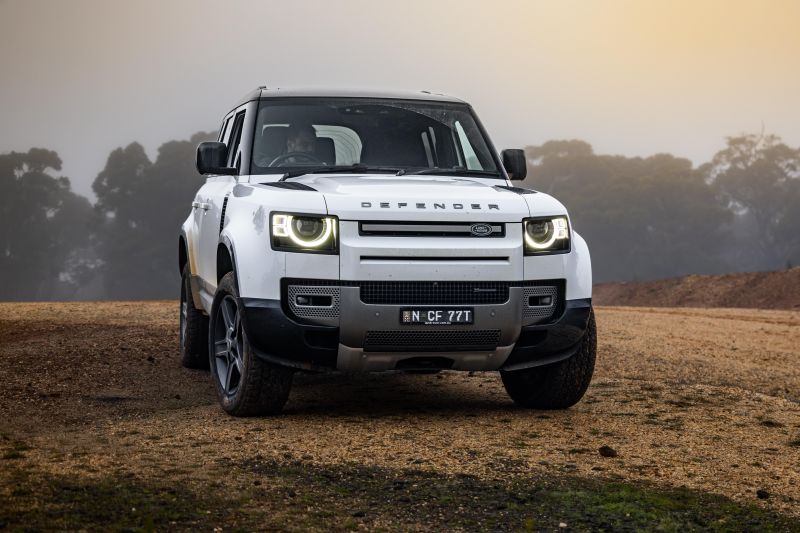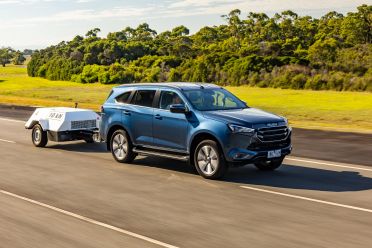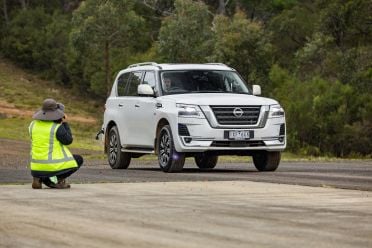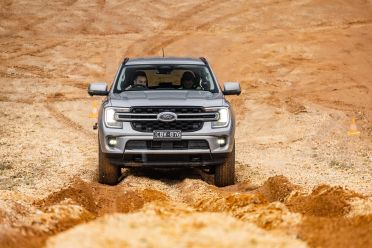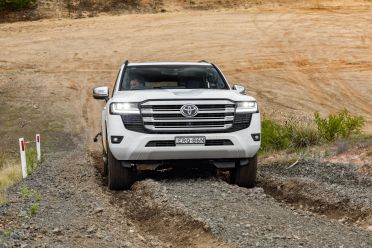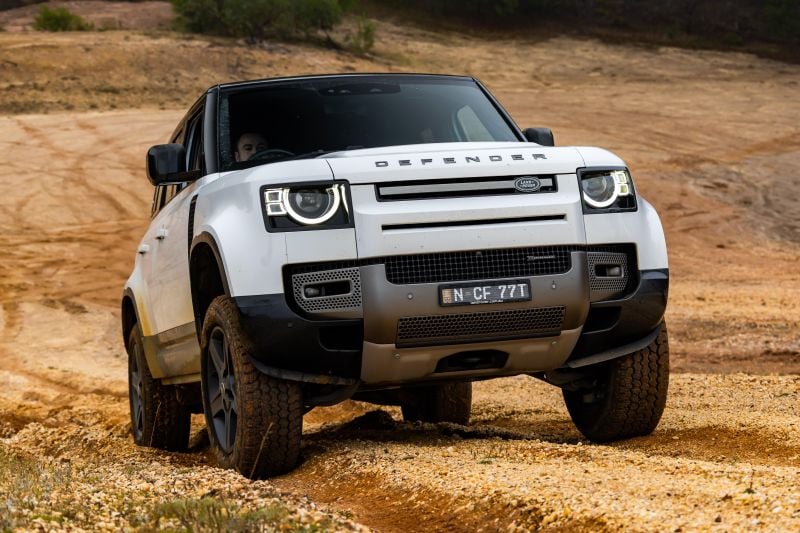We’ve tested them on the drag strip, we’ve put them through their paces off-road, and we’ve tested them with a trailer hooked up.
This is Australia’s most comprehensive 4WD SUV test, and it’s now time to reveal our overall winner, along with a recap of our full set of award winners.
All told, testing took five days split across two locations… with hundreds of kilometres between them.
As for what all the fuel, coffee, lollies, and lunches cost? Don’t ask, our accounting team is still recovering.
Before we get to the winners, let’s quickly go over the contestants.
| Vehicle | Engine | Fuel | Outputs | Trans. | 4×4 | Diff. lock(s) | Clearance | Tyres |
|---|---|---|---|---|---|---|---|---|
| Everest V6 | 3.0L V6 turbo | D | 184kW/600Nm | 10AT | 2H, 4A, 4H, 4L | Rear | 229mm | HT |
| Everest Bi-Turbo | 2.0L 4-cyl turbo | D | 154kW/500Nm | 10AT | 2H, 4A, 4H, 4L | Rear | 229mm | AT |
| MU-X | 3.0L 4-cyl turbo | D | 140kW/450Nm | 6AT | 2H, 4H, 4L | Rear | 235mm | HT |
| Patrol | 5.6L V8 | P | 298kW/560Nm | 7AT | 4A, 4H, 4L | Rear | 273mm | AT |
| Grand Cherokee L | 3.6L V6 | P | 210kW/344Nm | 8AT | 4A, 4L | N/A | 276mm | Road |
| Defender 110 | 3.0L I6 turbo | D | 220kW/650Nm | 8AT | 4A, 4L | Centre, rear | 228mm | AT |
| LX600 | 3.4L V6 turbo | P | 305kW/650Nm | 10AT | 4A, 4H, 4L | Centre | 205mm | HT |
| Pajero Sport | 2.4L 4-cyl turbo | D | 133kW/430Nm | 8AT | 2H, 4A, 4H, 4L | Rear, Centre | 218mm | HT |
| Rexton | 2.2L 4-cyl turbo | D | 148kW/441Nm | 8AT | 2H, 4H, 4L | Rear | 203mm | Road |
| Fortuner | 2.8L 4-cyl turbo | D | 150kW/500Nm | 6AT | 2H, 4H, 4L | Rear | 216mm | Road |
| LandCruiser 300 | 3.3L V6 turbo | D | 227kW/700Nm | 10AT | 4A, 4L | Centre | 245mm | AT |
| LandCruiser Prado | 2.8L 4-cyl turbo | D | 150kW/500Nm | 6AT | 4A, 4L | Rear | 220mm | AT |
And the winner is…
Our overall winner is the Land Rover Defender 110.
There’s nothing on test it didn’t do well in.
It outperformed expectations and very nearly toppled the Lexus LX600 in our drag race, and sat near the top of the table in each of our performance tests.
In the towing test it put all its rivals in the shade by combining a stable, comfortable ride with a torquey, effortless turbocharged inline-six engine that made towing our 2800kg trailer feel like nothing at all.
Thanks to its adaptive air suspension, locking differentials, chunky tyres, and torquey engine, it also was incredibly capable off-road.
Category winners
Performance 4WD SUV
Along with the round-robin drag race featured in our video, we put the 4WD SUVs through a series of performance tests on the high-speed bowl at the VinFast (nee Holden) proving ground in Lang Lang.
They included 0-100km/h, 80-120km/h and 1/4 mile performance runs, 100-0km/h brake tests, and acceleration tests with our dyne trailer hooked up.
MORE: Get the inside word on our drag race
MORE: All the performance figures from our testing
Towing 4WD SUV
First test was a trailer dynamometer with a variable load retarder that allowed us to impart up to 10kN of resistive load to the tow vehicle.
It allowed us to simulate a long, steep climb for the tow vehicle, which ultimately puts immense load on the engine.
This 1600kg trailer dynamometer is wirelessly linked up to a computer that lets the operator adjust the degree of resistance force as measured in kN – in our tests we set it to 3kN, which simulates a fairly steep ascent, but one that should be within each 4WD SUV’s abilities.
We tested fuel economy without the trailer on the back, and then again with the 3kN trailer hooked up to see how heavy hauling will hit your hip pocket.
We also hitched each 4WD SUV to a 2800kg trailer and tackled a road loop representative of regional Australia, including a 15 per cent climb, a descent to test engine braking, and some choppy bitumen to test the ride quality.
MORE: Read all the details from our towing test
Off-road 4WD SUV
Our off-road test was aimed at finding out which 4WD SUV is going to best handle the sort of moderate off-roading most owners will consider doing.
That’s because we wanted to test their four-wheel drive systems and traction control technology, rather than finding out how far you can go before getting bogged.
Our first test was driving each car onto a strip of bitumen on a 10 per cent grade, with a set of metal rollers under the right-hand wheels to simulate a variably slippery surface. By removing traction from one side of the car, we can ascertain the effectiveness of each car’s traction control.
We tested the vehicles in rear-wheel drive (2H) to establish a control, and then the relevant four-wheel drive (4H/4A, depending on car) setting.
Our second test centred around offset sand moguls. Each 4WD SUV was stopped with its front left and right rear tyre in the air, and the other two firmly on the ground.
With the cars situated as such, we opened the doors to test for any chassis flex, and then attempted to simply drive out of the moguls to see how effectively their four-wheel drive and traction control systems apportion torque to the wheels with traction.
Finally, Mogul and Gravel Mountains. This incline was, at 45 per cent, challenging to walk up, let alone drive.
On the way up, we maintained constant throttle until the vehicles started struggling, at which point we forced the engines to dig deeper.
We started at the bottom in each vehicle’s low-range (4-Low) gearing with rear diff locks engaged where possible. This differential lock allows both wheels on the axle to turn at the same speed, maximising surface purchase.
We then turned around and went down the same hill, to test the hill-descent control effectiveness, the low-range gearing, and the camera views where relevant.

